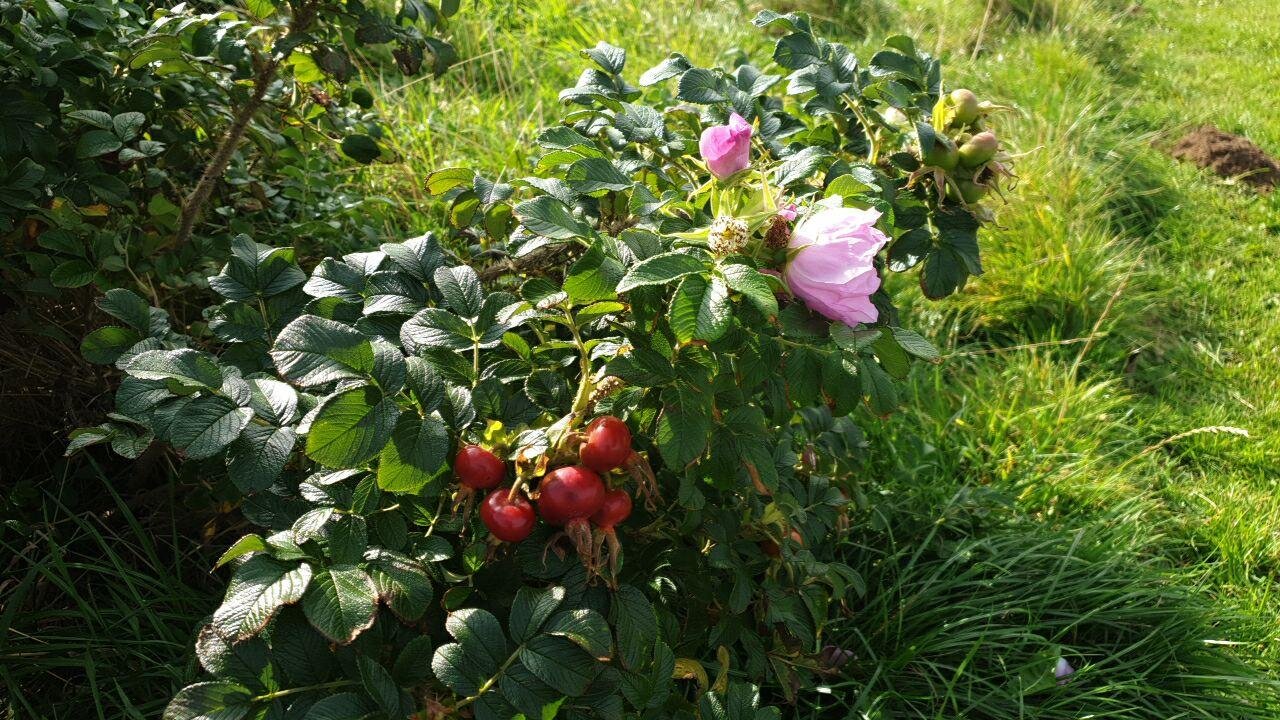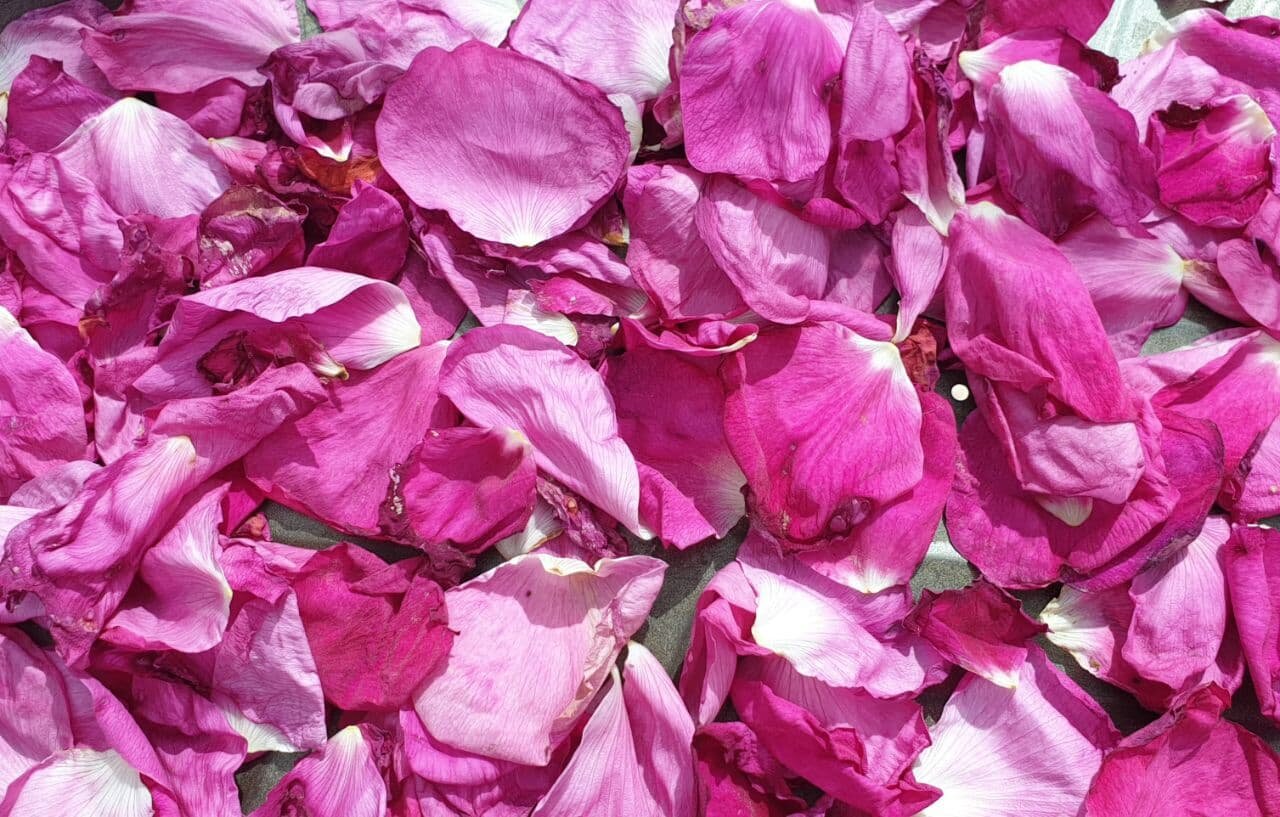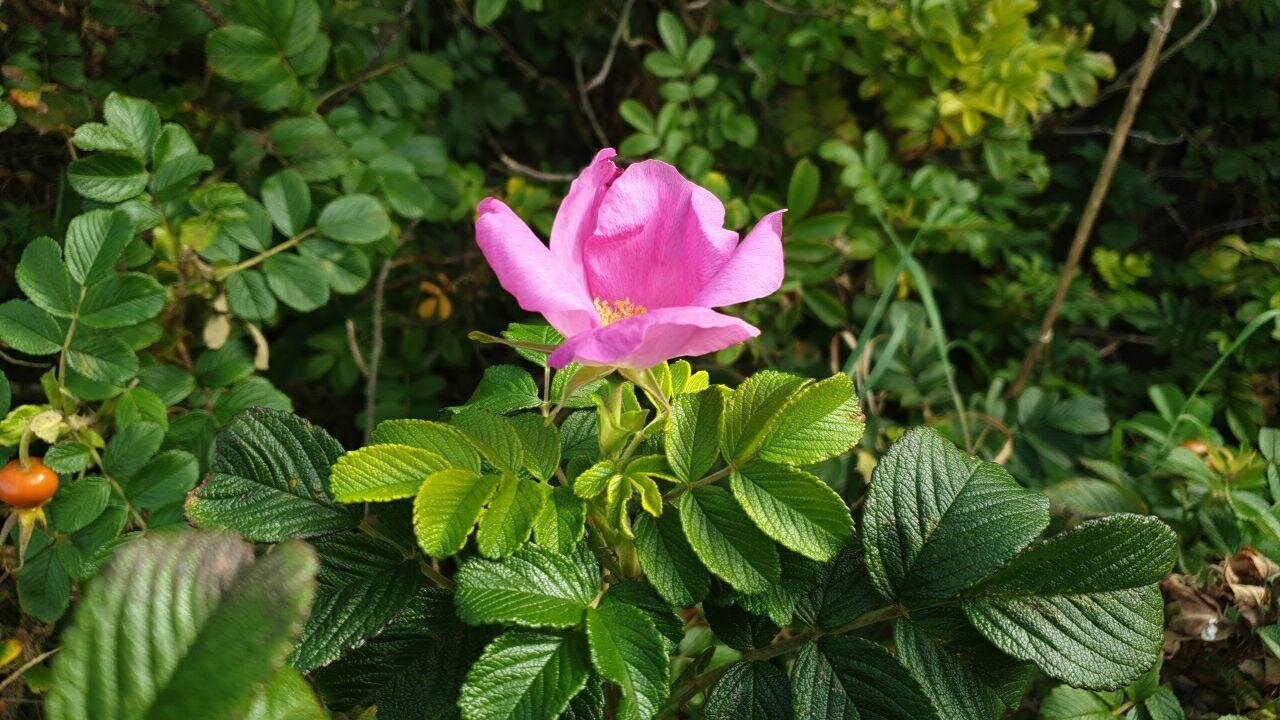Rosa Rugosa potpourri by Becky
Today I’m drying some rose petals on a tray in our conservatory, as it is sunny and warm and dry. It smells so good in there! In fact the lovely smell of roses is drifting through the house….
These petals are some fallen beauties which I collected off the grass yesterday evening. Wild Rosa Rugosa rose petals from the bottom of the hedgerow. I didn't pick any flowers because the fallen petals are good enough and the seed head is best left on the plant so it can form into a rose hip. They smell beautiful. (I really am no fan of chemical, artificial air fresheners, especially those that squirt at you uninvited out of plug sockets or above a door lintel!)
Paula told me that petals can also be dried in between brown paper of tissue. It’s best to keep turning them or moving them around until they are all completely dry. I know that some people dry them using a food dehydrator too.
In the glass bowl - one that had belonged to my dad’s parents which has an elegant glass stem on the bottom - are some petals which I had dried last week and they still smell lovely. I could add a few drops of organic essential oils later, like rose, rose geranium, lavender, lemon or even a few mixed drops as the petals look really elegant displayed in a pretty bowl. My mum loves then, which in turn makes me happy!
Below you can see I am drying some other petals from some beautiful flowers mum had around the house from her friends. Many florist flowers or bought flowers don’t smell these days which I find quite sad, but still, not to waste them! Their colours have remained really vibrant after drying and so they will make a lovely addition to the potpourri. Once the scent of the rose has faded away, I’ll add some natural essential oils to the mix. It lasts ages!
I’m not sure what these flowers are, I recognise chrysanthemums, freesias and of course forget-me-nots, one of my favourites!
Rosa Rugosa wild roses originated from south eastern Siberia, north eastern China, Korea and Japan and other areas of Eastern Asia where they were grown for their beauty and also for both food and their excellent medicinal qualities. They are very pretty and very vibrant. We often pass them in hedgerows unnoticed. Next time, ‘stop and smell the roses’ as they are truly beautiful. They became popular in gardens in the West in the 20th Century, and are very hardy, easy to grow, disease resistant, they like sandy soils. They are very thorny and invasive, and can grow into quite large bushes! So not for a small garden unless contained or heavily pruned.
Every part of the rose can be used, the petals can also be used for tea and are used in beauty products too. The rose hips are high in vitamin C, you can make jam or even eat them straight from the bush, but don't eat the hairy seeds! We used to use them as itching powder when we were children, and would drop them down unassuming people's t-shirt's so they would itch them!! There are many better uses of roses which you can discover with a little of your own research….
I dried some rose hips from these hedgerows last year, which you can see in the video below, and I have been using them to make tea ever since then and also I made lots of syrup which we enjoyed last summer. I made a blog about it last year, and I am glad to be able to see the roses again.
Things change, time passes, things move on and yet nature still produces these marvellous gifts each year. There's something very comforting about these natural cycles....







